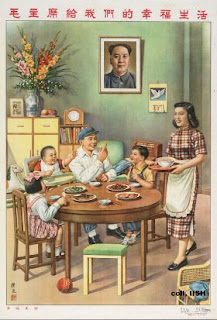Andy Warhol loved all forms of daily media and collected various newspapers, magazines, and supermarket tabloids. He recognized the power of mass-circulated media images in American culture and appropriated these as source material for his artwork.
Appropriation:
In the visual arts, the term appropriation is often used in a general way to refer to the use made of borrowed elements in the creation of new work.
These borrowed elements might include images, forms, or styles from art history or popular culture, or materials and techniques from non-art contexts.
Repitition
Popular Culture (worked as commercial artist)
Mass consumerism (objects and people and images)
Artist as machine (casual, easy, informal)
A group of people interested in seeing.
Ideology
A system of ideas and ideals, the ideas and manner of thinking characteristic of a group, social class or individual, the science of ideas; the study of their origin and nature
An interesting article from the The Guardian, September 2006, David Cronenberg. Link here.
Press Release from the Walker, discusses Warhol's work. Link here.
Link here to read article and watch video. Source is Smithsonian.com.
 |
| Green Coca Cola Bottles, Andy Warhol |
 |
| Andy Warhol, 1962. |
 |
| Fountain, Marcel Duchamp, 1917. |
 | |
|
An overview of the Cultural Revolution in China and a time line.
From the San Jose State University of Department of Economics.
Link here.
Source is Iconic Photos. Link here.
Gao Qiang, painting, New York Times article, 2006. Link here.
Source is Etsy.
Source link here.
DEATH AND DISASTER SERIES
Warhol explored the brief and tragic fame bestowed
on people after violent and unexpected termination of life.
 |
| Acrylic and pencil on canvas, 1962 110 x 72 inches |
Above image is a painting by Warhol. To create the painting, 129 Die in Jet, Warhol used an image from the June 4, 1962 New York Mirror and an opaque projector. He omitted the photo’s caption from this hand-painted work, leaving the context of the headline unknown.
 |
| Big Electric Chair, Andy Warhol, 1967, silkscreening on canvas, 54 x 73 inches. |
 |
| Race Riot, Andy Warhol, 1964, acrylic and silkscreen, 60 in x 66 in. |
Birmingham, Alabama riot of 1963. Birmingham campaign - a mass protest for racial justice.
Photo essay in Life magazine showed young black protestors
being fire-hosed and dogs attacking protestors.
 |
| Tuna Fish Disaster, Andy Warhol, 1963 Newsweek Article, two mothers, dead after eating tainted tuna. Consumerism. |
- What do you think is conveyed in 129 Die in Jet?
- How do journalists manipulateimages by cutting and cropping out information in order to suit their story? (ex.: tabloids, magazines, internet, etc.)
- What is the difference between journalism and art?
- How does the meaning change in these images when they are made into Warhol’s art?
- Do you think it is okay for artists to work from other people’s photographs? Why or why not?
Manipulation: The modification of images such as cutting and pasting, tonal adjustments, cropping, etc. using manual or image editing software.
Manipulation - What was modified in each image? (cut, pasted, tonal adjustments, cropping)
What did each artist appropriate? (borrowed elements in the creation of new work - elements might include images, forms, or styles from art history or popular culture, or materials and techniques from non-art contexts)





















No comments:
Post a Comment